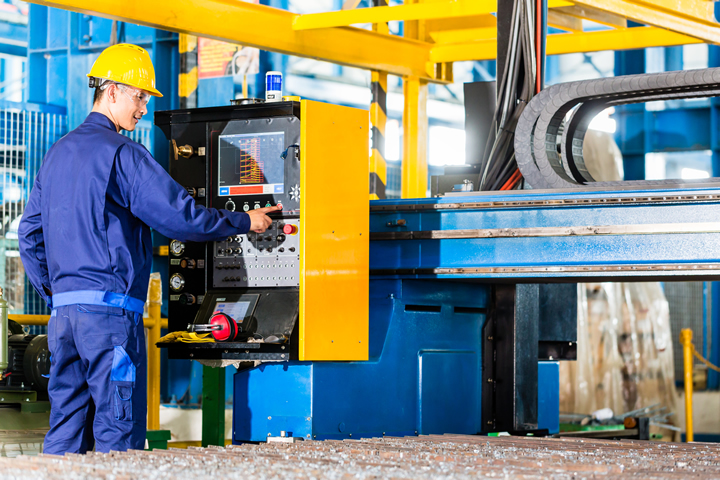Increasing Throughput With High-Speed Laser Cutting Systems

There is always room to improve manufacturing efficiency. New technologies like laser cutting have pushed productivity to new heights, but manufacturers can still adjust these workflows to bump their throughput higher. Doing so helps laser cutting systems deliver even more value.
Laser cutting is more efficient than conventional machining. However, as downstream demand rises, manufacturers must go beyond merely adopting this technology and refine their implementation to get more out of it. Several strategies can increase laser cutting throughput.
Thoughtful Automation
The most straightforward way to boost laser cutting efficiency is through automation. Manufacturers have shortened some processes from six hours to just two this way, as autonomous machines can work faster and make fewer errors than humans.
It’s important to note that automation alone won’t produce meaningful results. Robotic processes can work faster and more accurately, but only if workflows remain standardized and predictable. Consequently, manufacturers must optimize the processes around the automated segments for this technology to deliver on its potential.
In laser machining, this often entails ensuring all materials are properly aligned before sending them to an automated laser cutting system. Similarly, workers should inspect materials for defects that may hinder a smooth cut. Regularly calibrating automated laser tools is also necessary.
AI-Driven Optimization
Similarly, machining shops can use artificial intelligence (AI) to refine their laser cutting workflows. Many facilities already practice the lean principle of ongoing improvement, but automating these reviews through AI can produce better results.
AI excels at recognizing subtle trends in vast amounts of data. This precision means it can uncover bottlenecks, error-prone processes or other inefficiencies human analysts may not notice. However, these automated processes rely on proper implementation to achieve optimal outcomes.
Machine learning needs a lot of high-quality data to be accurate, so manufacturers must collect as much as possible from their existing workflows. Internet of Things (IoT) sensors — which 85% of manufacturing firms have already adopted — are an excellent source of this information. After collection, it’s crucial to cleanse it and remove inaccuracies or incomplete records for more reliable results.
Machine Vision Quality Control
Efficiency audits are one way manufacturers can use AI to optimize their laser cutting workflows. Tracking defects through machine vision quality control checks can also yield considerable improvements.
Machine vision uses AI to analyze visual data in real time. Using these systems to automate post-cutting quality control inspections has several benefits. Most notably, it removes the bottlenecks quality assurance typically creates, as machine vision can accurately inspect items at the speed of production.
The other big advantage of machine vision quality control is that it creates data points over each inspection. Machining shops can analyze this information with other AI models to uncover trends in laser cutting defects, revealing what to change to prevent them in the future. This double AI implementation may carry high upfront costs, but the ongoing efficiency improvements it enables make up for them over time.
Assist Gas Selection
Manufacturers’ choice of assist gas is another easy-to-miss opportunity for laser cutting efficiency. Any kind of compressed gas will remove debris from the cutting surface, but different mixtures offer varying degrees of dross reduction and chemical reactions with the metal.
Oxygen is a popular choice, but it generates additional heat and oxidizes metal, potentially leading to warping or undesired surface finishes. Nitrogen, by contrast, is inert, so it can remove debris without hindering the quality of the finished product. However, oxygen’s chemical reactivity can assist a deeper, smoother cut, so using a mix of nitrogen and oxygen is often beneficial.
The ideal oxygen-to-nitrogen ratio depends on the specific task at hand. Thicker metals may require more oxygen to assist with the cut, whereas more sensitive materials need a higher nitrogen content to prevent surface oxidation and warping.
Material and Machinery Matching
Along the same lines, machining shops must match their laser cutting machinery to their materials. Material and machine selection must also account for the product’s end use. Weighing these factors before designing laser cutting workflows will help manufacturers achieve the highest throughput possible without sacrificing part quality or safety.
Many plastics emit hazardous fumes in high heat, so they’re best to machine mechanically, not with lasers. Carbon fiber is safe to cut with a laser, but only before coating. Most metals are OK, but heat-sensitive or thin ones may require a lower-power laser than thicker, more resilient ones.
Similarly, automated laser cutters are the most efficient option when working with materials with minimal variation between individual samples. Any part that requires natural materials like wood, which may have more variation, is best cut manually. Even though this process is slower, manual cutting will produce fewer errors, saving time in the long run.
Pre-Cutting Efficiency
Process improvements around laser cutting can also boost overall efficiency. Among the most impactful of these changes is using CAD software instead of entirely manual workflows in the design stage. Modern CAD tools include automated features to streamline design changes and produce simulation results in real time, leading to dramatic time savings.
Employee training is another important area to target. A significant portion of unplanned downtime stems from human error, and these mistakes can even impact automated workflows, as upstream errors may affect downstream processing. Taking the time to train workers thoroughly and using technologies like augmented reality to make the process more engaging will prevent mistakes, reducing downtime in the long term.
Reorganizing workflows to minimize movement or using AI to find more efficient sourcing options can also help. Whatever the specifics, streamlining upstream workflows ensures laser cutting can reach its full productive potential.
Get More Out of High-Speed Laser Cutting Systems
High-speed laser cutting is a game-changing process for some manufacturers. As more businesses capitalize on that advantage, lasers alone won’t be enough to remain competitive. Machining shops must also learn to use these tools more effectively than competitors.
Any technology is only as useful as its implementation. Learning to increase throughput through strategies like these will help manufacturers get more out of their laser cutters. They’ll recognize more significant returns on investment and enable long-term process improvements as a result.
Comments (0)
This post does not have any comments. Be the first to leave a comment below.
Featured Product

